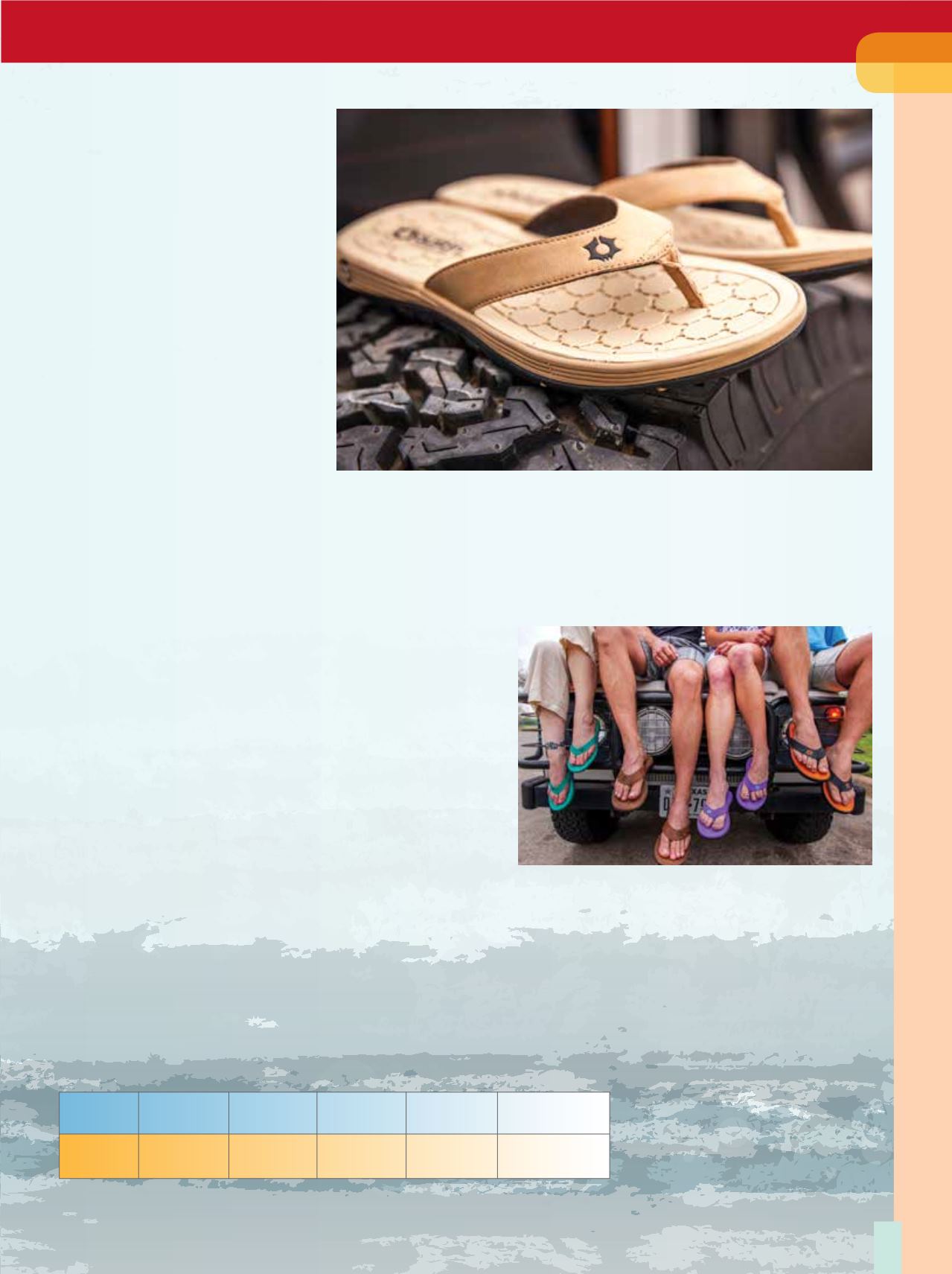

engineer in both government and in-
dustry, were looking for a spot remov-
er for organic-based fabric, relates
Fitz Lee, president of Tredagain.
“At one point they kept thinking
they had defective rubber stoppers,”
says Lee, “until they realized this was
pretty special, and they spent the
following few years isolating the phe-
nomenon and optimizing the process.”
Their proprietary Fan Process,
named in honor of the late Dr. Fan,
uses rubber crumb from tires to
devulcanize into APX, a 100 percent
virgin rubber or virgin rubber substi-
tute. A patent application was applied
for in 2006 and later issued.
In 2007, Fan, Shafie, Lee and a few
other colleagues went on to form Green
Source Holding Company, a business
dedicated around “opportunities that
use technology to solve resource effi-
ciency issues.” Austin Rubber Company
and Austin Footwear Labs are two of
the core businesses. Fan and Shafie’s
breakthrough technology is what pow-
ers Austin Rubber Company’s bread-
and-butter product APX.
APX, in turn, is used by Austin
Footwear Labs’ Tredagain footwear,
Green Source Holding’s demonstration
platform for APX. Which is why Austin
Footwear Labs’ Tredagain is so special:
it is the first use of APX in what is to be
a revolution in the upcycling of waste
rubber to high-performance second,
third or potentially innumerable prod-
uct reincarnations. The other plus side
of APX is its affordability. It is cheaper
than virgin rubber with no performance
downsides, says the company.
“The best part about our story is
that consumers can’t tell we are us-
ing APX since quality, durability and
performance are not compromised,”
says Lee. “Our goal with Tredagain
was making fashion, sustainability and
affordability come together.”
Lee is quick to emphasize that this
product is not recycled. It is upcycled.
“No longer is a token 1 to 3 percent
of factory scraps as filler (i.e. non-
functional component in the rubber
master batch) going to cut it with the
educated consumer. Upcycle not re-
cycle is the new industry
standard, and 50 per-
cent is the new sustain-
ability goal,” says Lee.
On the quality and
durability side of the
equation, Lee’s numbers
on APX seem to bear
things out. For those
familiar with Shore hard-
ness nomenclature, an
outsole rubber sample
and one with 50 percent
APX have about the
same value (see table).
What’s the maximum amount of
APX used in a given master batch?
“Depending upon the specific physi-
cal and dynamic qualities you are tar-
geting, there are upper limits for each
compound,” Lee explains. “Since APX
comes from tires, there will be some
physical properties it will not provide on
its own, so different virgin materials will
need to be added to achieve them.”
Tredagain sandals carry 50 per-
cent loads of APX (with load being
the weight percentage of total rub-
ber compound), “but Austin Rubber
has hit 80 percent loads on other
compounds that do not require the
same dynamic properties,” contin-
ues Lee. “We have in-house polymer
compounding capabilities to help our
customers to select the correct com-
pound for their application.”
For now, Tredagain is focused on
men’s and women’s sandals, but Lee
promises new urban rain boots for
Fall 2016. Consumers who purchase
online will be glad to see Tredagain
ships using recycled packaging,
stamped not printed shipping labels
and recyclable shape-holding inserts.
It’s all part of that better footprint.
Specs/
Targets
0% APX 25% APX 50% APX Test Method
Durometer
60-65 Shore A 62-64 Shore A 63-64 Shore A 60-62 Shore A ASTM D2240
Tredagain’s hand-stitched Woman’s Classic Sandal (sand)
Comparison between Austin Rubber APX at 25% and 50% concentrations versus
typical rubber used for footwear outsole applications (Courtesy of Fitz Lee, Tredagain)
Inside
Outdoor
|
Spring 2016
19
















